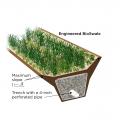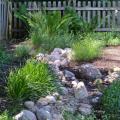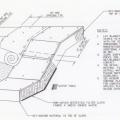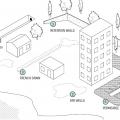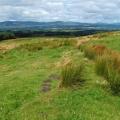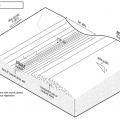Showing results 1 - 14 of 14
An engineered bioswale uses perforated pipe laid in rock and landscape fabric at the bottom of a vegetated trench to direct water away from a site.
Backflow prevention devices keep water and sewage from entering the home during a flood preventing damage and health and safety issues.
Berms are compacted earth or gravel ridges that slow the flow of water from rain, riverine flooding, or storm surges in coastal areas.
Berms, swales, bioswales, ridges, and vegetation all help to control rainwater runoff on residential sites.
Bioswales or rain gardens filter storm water through vegetation and rock and sand substrate layers.
Installation of an erosion control blanket to minimize soil loss on sloped ground that has no established vegetation
Repair leaks and cracks, and cover holes in foundation floors and walls to minimize water and vapor entry.
Retention walls, permeable pavement, french drains, drywells, and ditches all help to divert, collect, and manage the flow of stormwater on a site.
Ridges can be constructed and planted to slow the downward flow of water and stabilize slopes.
Soil types include sand, silt, and clay- the more sand, the more quickly the soil drains.
This swale and berm slow the flow of stormwater across a site to minimize erosion.

